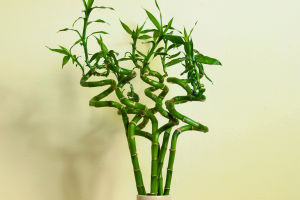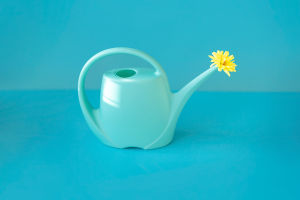Cordyline fruticosa, also known as the Ti plant, is a popular tropical plant admired for its vibrant foliage.
Often grown indoors as a houseplant or in gardens as a striking ornamental, the Cordyline fruticosa can offer an exotic flair to any landscape with its bright green, red, or purple leaves.
However, for gardeners and plant enthusiasts, one of the key questions is whether this plant prefers full sun or shade. Understanding the optimal growing conditions for Cordyline fruticosa is crucial to keeping it healthy and vibrant.
Natural Habitat and Growth Preferences
Cordyline fruticosa originates from tropical and subtropical regions of Southeast Asia, Polynesia, and parts of Australia. In its natural environment, the plant is typically found in forests where it grows under the canopy of taller trees, receiving filtered sunlight or partial shade. This gives us an important clue about its light preferences: while Cordyline fruticosa can tolerate some sun exposure, it is more accustomed to dappled light and indirect sunlight in nature.
Full Sun Tolerance: Can It Handle Direct Sunlight?
The question of whether Cordyline fruticosa likes full sun doesn’t have a simple yes or no answer because it depends on the specific conditions of the environment. In general, this plant can tolerate full sun if the climate is not too extreme. In tropical and subtropical areas where the sun is intense but the humidity is high, Cordyline fruticosa can thrive with several hours of direct sunlight, especially in the morning or late afternoon. However, in these conditions, it is still essential to provide the plant with adequate water to prevent the leaves from drying out or becoming scorched.
On the other hand, in regions with dry or extremely hot climates, full sun exposure can be damaging to Cordyline fruticosa. The strong, unfiltered sunlight can cause the leaves to scorch, turning brown or yellow, and the plant may suffer from dehydration or even die. In such cases, Cordyline fruticosa is better suited to partial shade or filtered light.
Best Lighting Conditions for Optimal Growth
For the healthiest and most vibrant growth, Cordyline fruticosa thrives best in bright but indirect light. A location where the plant can receive several hours of bright, filtered sunlight throughout the day, such as under a shaded pergola or indoors near a bright window with sheer curtains, is ideal. This balance allows the plant to absorb sufficient light for photosynthesis without the risk of sunburn on its delicate leaves.
When grown indoors, Cordyline fruticosa should be placed in a bright room where it can receive indirect sunlight for most of the day. A room with east or west-facing windows is often suitable, as the plant will get morning or afternoon sun, which is less intense than midday rays.
For outdoor growth in a garden, consider planting Cordyline fruticosa in an area with partial shade or in a spot where taller plants or trees can provide protection from the harshest sunlight. If the plant is exposed to too much direct sunlight, particularly during the hottest parts of the day, you may notice signs of stress, such as wilting or leaf discoloration.
Signs of Sun Stress
It’s important to monitor your Cordyline fruticosa for signs of sun stress if it is growing in full sun. Common signs that the plant is receiving too much direct sunlight include:
- Scorched or Brown Leaves: The leaves may become crispy and brown around the edges or develop yellow patches, which indicates sunburn.
- Wilting or Drooping: If the plant looks weak or wilts despite being watered, it could be suffering from too much sun exposure.
- Faded Colors: While Cordyline fruticosa is known for its vibrant colors, too much sun can cause the foliage to lose its brightness and become dull.
If you notice these symptoms, it’s a good idea to relocate the plant to a shadier spot or provide it with some form of protection, such as shade cloth, during the hottest part of the day.
Watering and Humidity Needs
Cordyline fruticosa is a plant that loves moisture and thrives in humid conditions, which is why it does better in partial sun. If you are growing this plant in full sun, especially in dry climates, it’s important to ensure it receives enough water to prevent the leaves from drying out. Regular watering is crucial, but be careful not to overwater, as the plant is also susceptible to root rot. Keeping the soil consistently moist but well-drained is key.
Increasing humidity around the plant can also help. Consider misting the leaves or using a humidity tray if you are growing the plant indoors in a dry environment.
Cordyline fruticosa can tolerate full sun in certain conditions, but it generally prefers bright, indirect light or partial shade. In areas with hot, dry climates, full sun exposure can damage the plant, causing scorched leaves and dehydration. For the best results, grow Cordyline fruticosa in a location where it can enjoy a balance of sunlight and shade, along with consistent watering and humidity to keep its vibrant foliage healthy and thriving.


